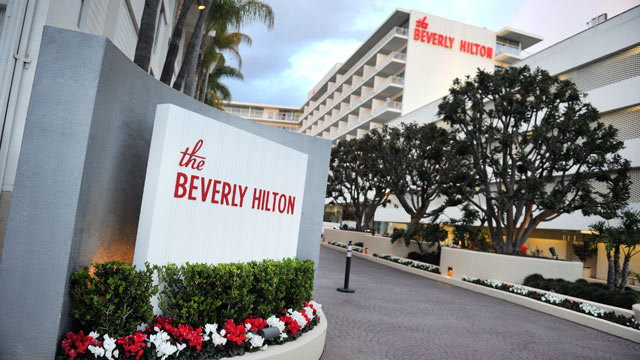In 1981 I lived in an SRO hotel on Upper Broadway, at a
time when that neighborhood, sandwiched between the Upper West Side and
Columbia, had not yet been gentrified. A Latin bar called La Ronda flashed its
neon all night, and periodically fights spilled out onto the sidewalk.
Visitors had to check in with the grizzled, half-soused
receptionist before being allowed upstairs to my small studio. The single
window looked out onto an air shaft so the room never got natural light.
Cockroaches roamed rampant in the tiny kitchen, the size of a closet, with a
tiny refrigerator and a two-burner stove.
I worked just up Broadway in the alumni office for Columbia
Business School, and one of my responsibilities was traveling out regularly to
visit alumni clubs and bring them news of the campus.
The hotel rooms were always nicer than home.
It wasn’t just the service—someone to clean the bathroom, swap the towels and
make the bed. The towels were bigger and plusher, and there were always thick
white bathrobes. The bedding was crisp and white, the pillows fluffy. There was
free cable TV, even HBO and MTV, back when they were big novelties.
Nowadays, though, the equation is reversed, and home is
nicer than the hotels where I stay. It’s first a matter of economics. Now, for
the most part, I travel on my own dime, and even when I’m go to a
college-sponsored event my expenses are limited.
Hilton isn’t what it once was. Now there are W's and
Mandarin Orientals and all manner of boutique hotels that are well outside my
price range. So I end up at the Best Western, the Ramada, sometimes a Sheraton.
These hotels aren’t trying for the epitome of luxury—they’re
aiming for a middle niche. But at the same time, my own home life has improved. My bedroom has the perfect lights for reading, with a bookcase right beside the bed. I have more disposable income for things like linen pillowcases and huge,
fluffy Turkish towels -- much better than the rough, skimpy hotel towels that barely wrap around my midsection.
My queen-sized bed has a down comforter and big down-filled pillows, and has spoiled me for hard mattresses, foam pillows and those thin polyester bedspreads.
The first time I used a hotel shower with a massaging head, I felt like visiting royalty. Now those heads are twenty years old, and I have to bend over in a slippery tub to wash my hair. At home, I have a brand new marble-tiled shower with a big, square rain shower head positioned just right for my height, as well as a hand-held three speed attachment.
And at my home as well, I have a partner and two loving dogs. No hotel chain is going to duplicate that.
My queen-sized bed has a down comforter and big down-filled pillows, and has spoiled me for hard mattresses, foam pillows and those thin polyester bedspreads.
The first time I used a hotel shower with a massaging head, I felt like visiting royalty. Now those heads are twenty years old, and I have to bend over in a slippery tub to wash my hair. At home, I have a brand new marble-tiled shower with a big, square rain shower head positioned just right for my height, as well as a hand-held three speed attachment.
And at my home as well, I have a partner and two loving dogs. No hotel chain is going to duplicate that.



